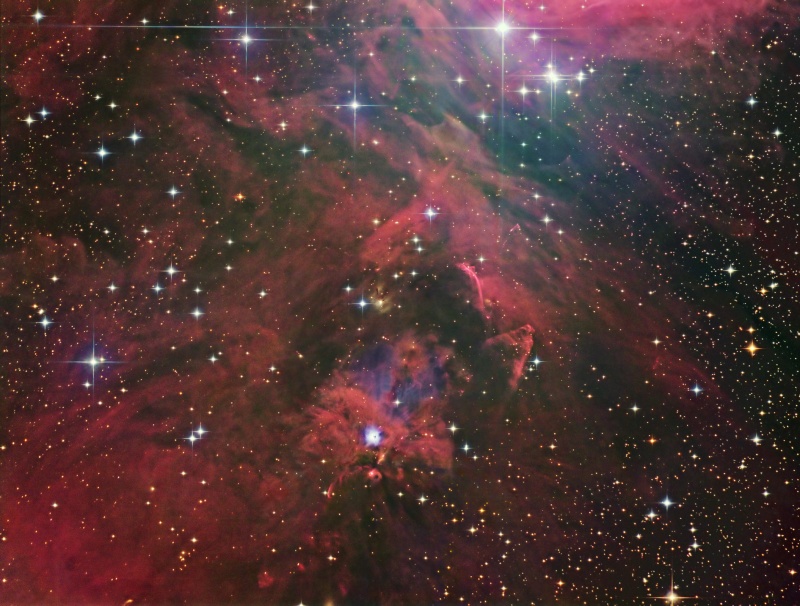Credit & Copyright: Johannes Schedler
(Panther Observatory)
Explanation:
This tantalizing array of nebulae and stars can be found
about 2 degrees south of the famous
star-forming Orion Nebula.
The
region abounds with energetic young stars producing jets and
outflows that push through the surrounding
material at speeds of hundreds of kilometers per second.
The interaction creates luminous shock
waves known as
Herbig-Haro (HH) objects.
For example, the graceful, flowing arc just right of center
is cataloged as HH 222, also called the Waterfall Nebula.
Seen below the Waterfall, HH 401 has a distinctive cone shape.
The bright bluish nebula below and left of center
is NGC 1999, a dusty cloud reflecting
light from an embedded variable star.
The entire cosmic vista
spans over 30 light-years, near the edge of the
Orion
molecular cloud
complex
some 1,500 light-years distant.
1999 2000 2001 2002 2003 2004 2005 2006 2007 2008 2009 2010 2011 2012 2013 2014 2015 2016 2017 2018 2019 2020 2021 2022 2023 2024 2025 |
Yanvar' Fevral' Mart Aprel' Mai Iyun' Iyul' Avgust Sentyabr' Oktyabr' Noyabr' Dekabr' |
NASA Web Site Statements, Warnings, and Disclaimers
NASA Official: Jay Norris. Specific rights apply.
A service of: LHEA at NASA / GSFC
& Michigan Tech. U.
|
Publikacii s klyuchevymi slovami:
Orion - Herbig-Haro object - Orion - Ob'ekt Herbiga-Aro
Publikacii so slovami: Orion - Herbig-Haro object - Orion - Ob'ekt Herbiga-Aro | |
Sm. takzhe:
Vse publikacii na tu zhe temu >> | |
